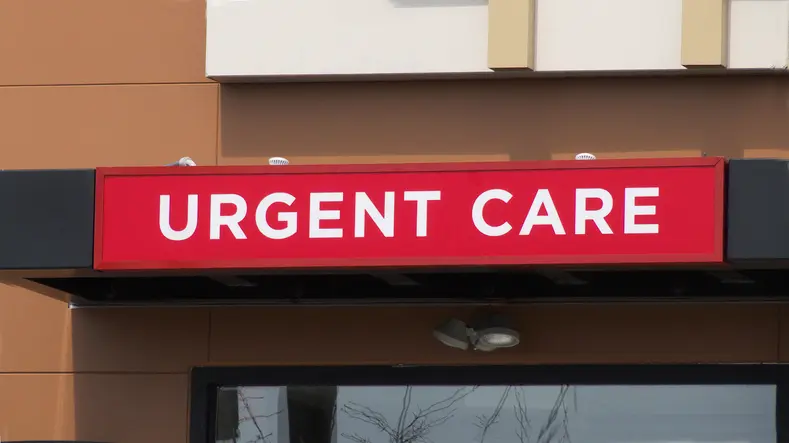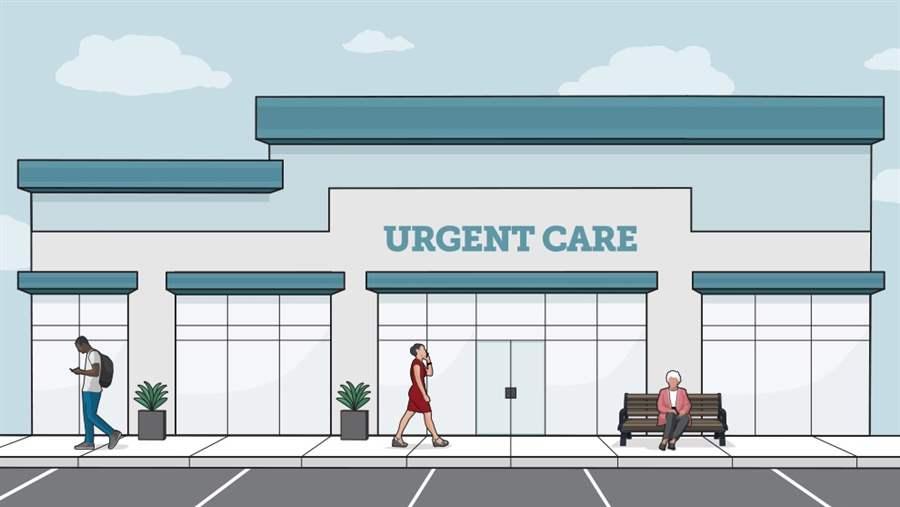Understanding When to Go To Urgent Care for Non-Emergency Health Issues
Understanding When to Go To Urgent Care for Non-Emergency Health Issues
Blog Article
Comprehending the Relevance of Urgent Care Providers for Non-Life-Threatening Medical Issues
The value of immediate care solutions for non-life-threatening medical concerns can not be overstated, particularly in today's medical care landscape. By comprehending the advantages of urgent treatment, such as minimized wait times and price effectiveness, one can better value their role in patient wellness administration.
What Is Urgent Care?
Immediate care refers to a category of clinical solutions created to address non-life-threatening conditions that call for immediate interest but do not call for a visit to the emergency situation room. These facilities give a bridge between main treatment and emergency solutions, offering easily accessible medical care options for people experiencing intense medical problems, such as small fractures, sprains, infections, or serious ailments that occur all of a sudden.

The scope of services provided by immediate treatment facilities can vary but typically includes treatment for usual ailments like colds, flu, and allergic reactions, along with small injuries (urgent care). Furthermore, lots of urgent care facilities supply preventative solutions, such as inoculations and physical examinations, to resolve more comprehensive wellness requirements. By offering a convenient choice for urgent clinical concerns, these facilities play a vital function in the healthcare continuum, ensuring that people obtain suitable treatment when they need it most
Benefits of Urgent Care Provider
Lots of people discover that utilizing immediate treatment solutions offers substantial advantages over typical emergency room brows through or waiting on a medical care visit. One key benefit is the minimized wait times. Urgent treatment centers usually have much shorter wait periods, permitting patients to get prompt clinical attention when they need it most. This expedited treatment is particularly practical for non-life-threatening problems that require prompt treatment.
One more advantage is the prolonged hours of procedure. Lots of immediate treatment facilities are open nights and weekend breaks, suiting people who may not be able to see their health care medical professional throughout regular office hours. This versatility makes it easier for clients to access treatment at their benefit.
Furthermore, immediate treatment services typically supply an affordable choice to emergency clinic. Individuals regularly face lower co-pays and general costs when looking for therapy for small disorders at urgent care centers instead than health center emergency situation divisions.
Finally, urgent treatment centers are outfitted to deal with a variety of non-life-threatening concerns, supplying a wide array of services under one roof. This thorough method not only simplifies the treatment procedure however also boosts client complete satisfaction by supplying timely and efficient treatment.
Common Conditions Dealt With
What kinds of non-life-threatening conditions can individuals expect to get treatment for at urgent treatment centers? Urgent treatment facilities are furnished to deal with a wide variety of usual medical problems that require timely attention yet do not pose a prompt risk to life. These facilities frequently treat problems such as minor cracks, strains, and pressures, supplying vital care for injuries that happen during everyday activities or sporting activities.
Additionally, individuals frequently seek treatment for breathing infections, consisting of colds, influenza, and bronchitis, where timely intervention can ease signs and symptoms and prevent difficulties. Skin disease such as rashes, insect bites, and blog minor burns are likewise frequently resolved, as prompt treatment can mitigate discomfort and decrease the danger of infection.

Contrasting Urgent Treatment and Emergency Situation Spaces

One significant difference waits times; immediate treatment centers commonly have much shorter delay times compared to emergency rooms, which can be congested with more critical cases. This efficiency permits people to obtain timely treatment for their ailments.
From an economic perspective, immediate care sees often tend to be less costly than emergency area sees. Insurance coverage copays and out-of-pocket expenses are often reduced at urgent treatment centers, making them an extra affordable option for non-emergency situations.
Exactly How to Choose an Urgent Treatment Facility
Selecting the appropriate immediate care center can significantly boost the high quality of care gotten throughout a non-life-threatening medical concern. When selecting an immediate care facility, several crucial factors ought to be considered.
First, analyze the center's accreditation and licensing. Some urgent treatment facilities specialize in certain locations, while others provide detailed care for different clinical concerns.
Additionally, think about the area and hours of procedure. A conveniently located facility with prolonged hours can be crucial for timely care. It's likewise a good idea to examine the center's wait times and client evaluations, which can give understandings right useful site into the overall individual experience.
Verdict
In final thought, urgent treatment services play a vital duty in resolving non-life-threatening medical issues successfully. Eventually, understanding the value of immediate care centers adds to enhanced healthcare monitoring and client complete satisfaction.
 By providing a convenient option for urgent clinical issues, these facilities play an important duty in the health care continuum, ensuring that individuals receive proper care when they need it most.
By providing a convenient option for urgent clinical issues, these facilities play an important duty in the health care continuum, ensuring that individuals receive proper care when they need it most.Many individuals locate that utilizing immediate treatment services gives significant benefits over conventional emergency space gos to or waiting for a main treatment appointment. Lots of immediate care centers are open nights and weekends, her response fitting people that may not be able to see their main treatment physician during routine workplace hours. Urgent care centers are made to address non-life-threatening conditions, such as minor cracks, infections, and diseases, using a practical option to emergency situation areas for those in requirement of prompt treatment. Some urgent care centers specialize in particular areas, while others offer thorough treatment for various medical problems.
Report this page